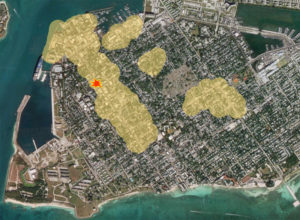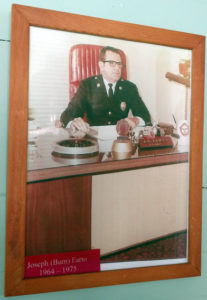Fascinating stories of Key West’s firefighting history, the cigar industry, and devastating fires on the island

Key West’s Old Town neighborhood is the largest collection of historic wooden structures in the United States. These treasured buildings, each dry as kindling, have survived for almost two-hundred years thanks to the brave and hard work of Key West’s fire departments.
The newly opened Key West Firehouse Museum, in the historic Firehouse No. 3 circa 1907 and one of the oldest firehouses in Florida, does an outstanding job of documenting the history and artifacts of the island’s fire departments.
The cigar industry is also prominently discussed. In the 1890’s, Key West made more cigars than the rest of the world combined, and fires had numerous impacts on the industry – and the town.

In 1875, Key West created its first City fire department using a largely volunteer force. During the 19th century, Key West fought fires using salt water as it is more effective than fresh water in fighting fires. A system of wells and steam-driven pump trucks, developed in 1888, did a good job of keeping fires from spreading.
But there were two devastating fires in early Key West, and each led to advancements and investment in the island’s firefighting capabilities.
“The 1859 Fire”

The first big fire was in 1859 when much of the commercial district at that time was burned to the ground. Started in a warehouse under suspicious circumstances, the fire was stopped only by the incredible action of one person, Henry Mulrennon. He saw the fire was likely to continue its march across town. With a keg of gun powder, he blew up his own house on the corner of Fitzpatrick and Greene Street (shown on the map to the right), thereby creating a fire break.
After this fire, the city mandated metal shingle roofs for newly built structures in this part of town.
But with the rest of the town still clad in wooden shingle roofs, an even larger fire was about to destroy nearly all of Key West.
“The Great Fire of 1886”

The Great Fire of 1886 was Key West’s largest and most devastating fire. The blaze began in a cafe next to the San Carlos building on Duval Street, at the time a three story wooden structure where Cuban revolutionaries plotted the overthrow of Spain. Some believe it was Spanish loyalists who set fire to the San Carlos. Regardless who started it, within 12 hours forty-percent of the city had burned, including eighty-percent of the commercial area. Seven people died and fifteen were injured. Seventeen
cigar factories were destroyed. City Hall and most of its records were incinerated. The only thing that stopped the inferno was the Gulf of Mexico. The entire working shoreline burned to the ground.
Before 1940, there was no running household water in Key West. Instead, cisterns collected rain water for drinking, cooking, and bathing. The Key West Fire Station No. 3 had a roof-mounted cistern, and was the only place on the island where one could take a shower.
“Gato Fire”
In 1915, one of Key West’s largest cigar factories burned. Thanks to advancements in fire fighting capabilities, this fire was largely contained to the structure. The building was replaced with the stone and concrete structure on the corner of Simonton and Amelia Street. Today it is home to Monroe County’s offices, and its lobby has an excellent interpretive display of Key West’s cigar industry.
“Where is Bum Farto?”

Key West being Key West, its history is filled with colorful characters. Maybe none more so than Joseph “Bum” Farto, the chief of police from 1964-1975. Chief Farto’s father was the owner of Sloppy Joe’s building. The young Farto was known for hanging around the nearby fire house, and became adept at bumming change – hence the “Bum” nickname, considered by locals as one of endearment. In 1975, Bum was found guilty on serious narcotics charges, but refused to co-operate with authorities about
accomplices. Just before sentencing in 1976, Bum disappeared, setting off speculation. Had he been murdered by a criminal organization? Had he fled the country? Ten days after his disappearance, Bum Farto’s rental car was found in Miami. He has not been seen since. For years a headline, or t-shirt, often stated “Where is Bum Farto?” to the amusement of visitors and locals alike.
We highly suggest taking the time to visit the Key West Firehouse Museum.
Hours: Open Tuesday – Saturday, 10 am – 3 pm
Cost: $10 per adult, $5 per local, military, and First Responders, and FREE for children 12 years and under
Phone: 305-849-0678
Location: 1024 Grinnell Street (corner of Virginia St.)
